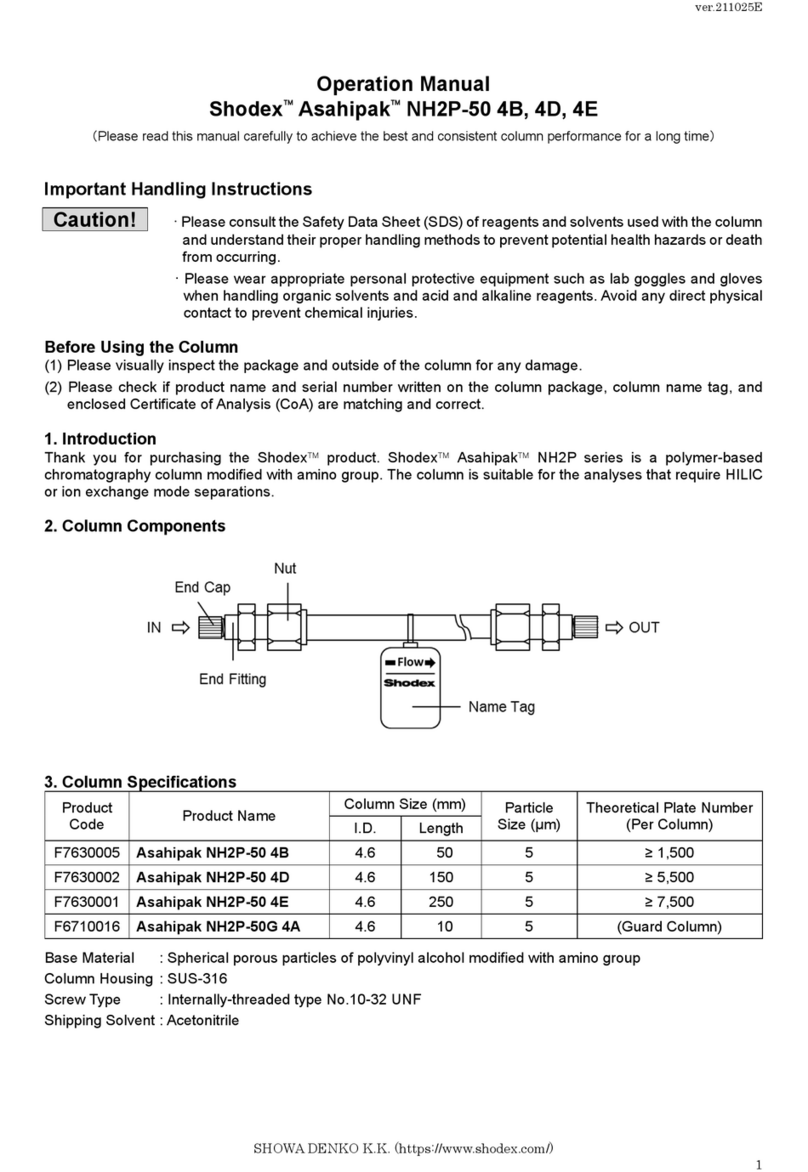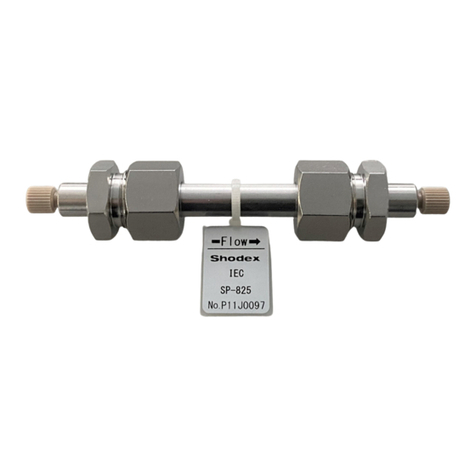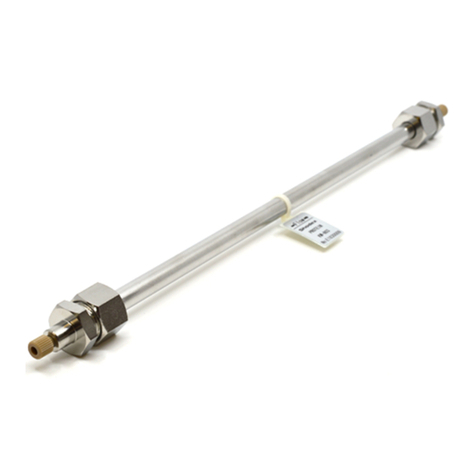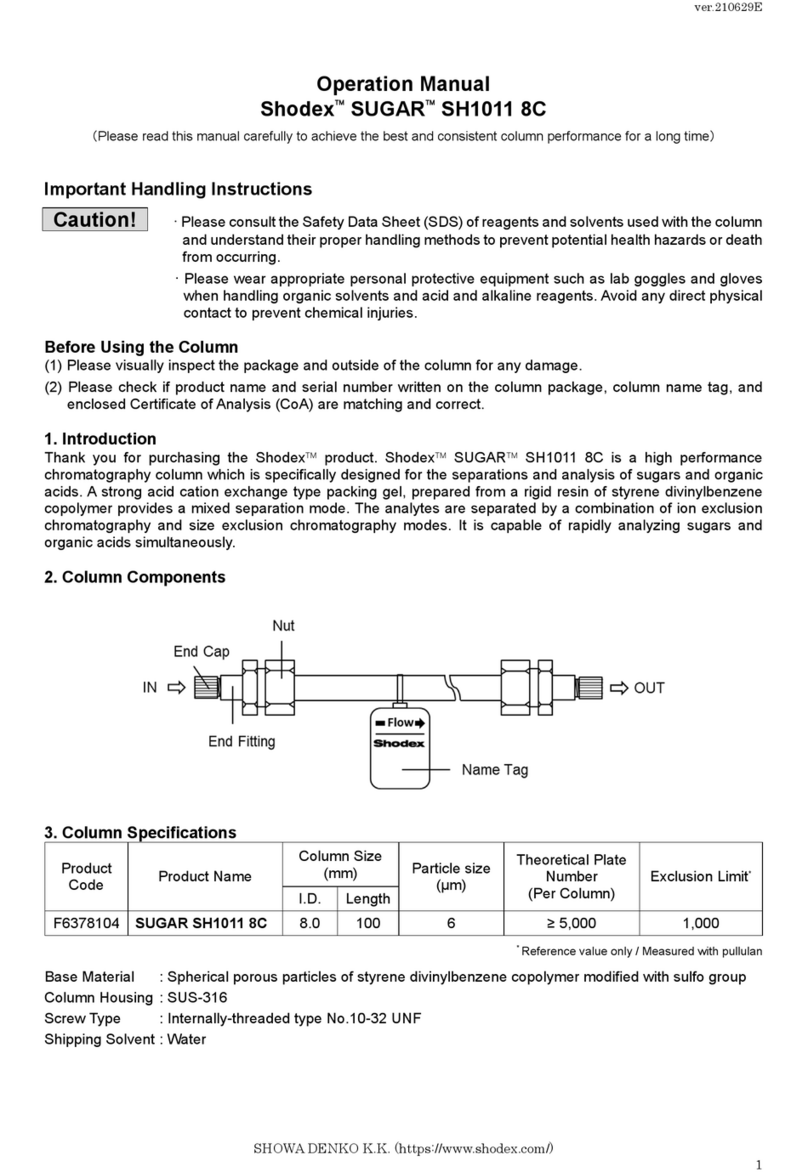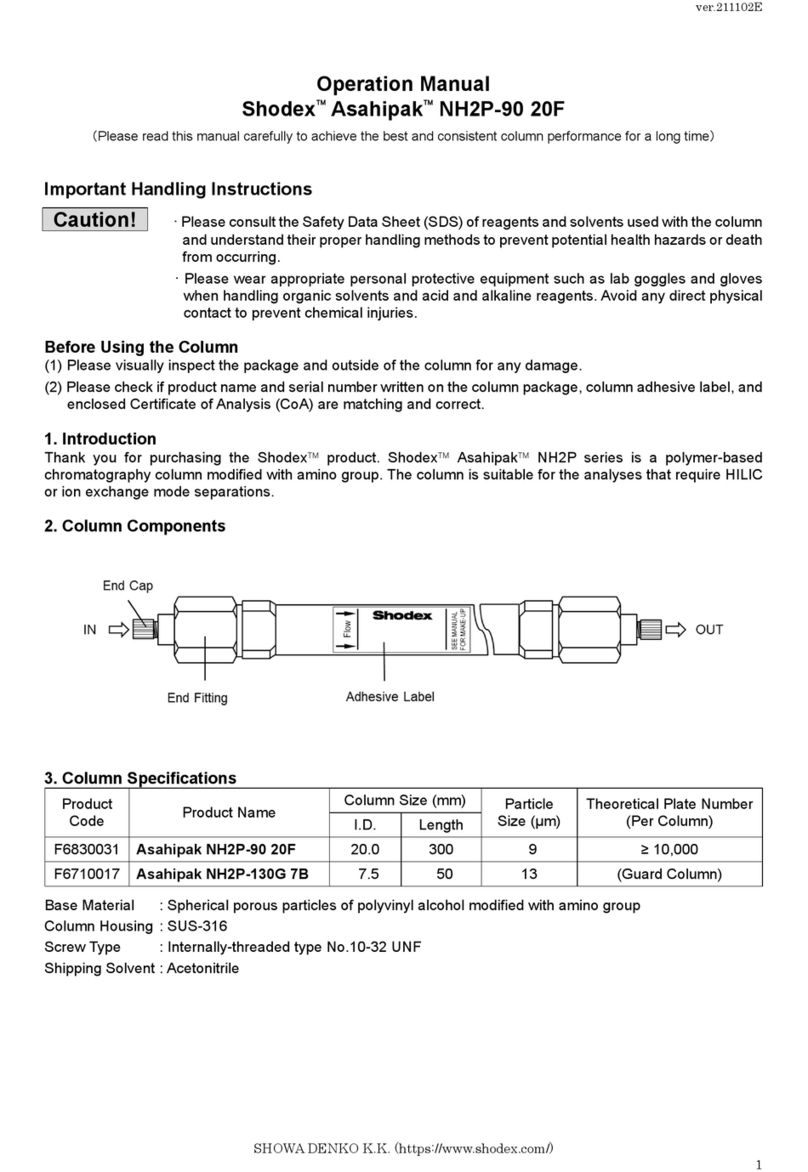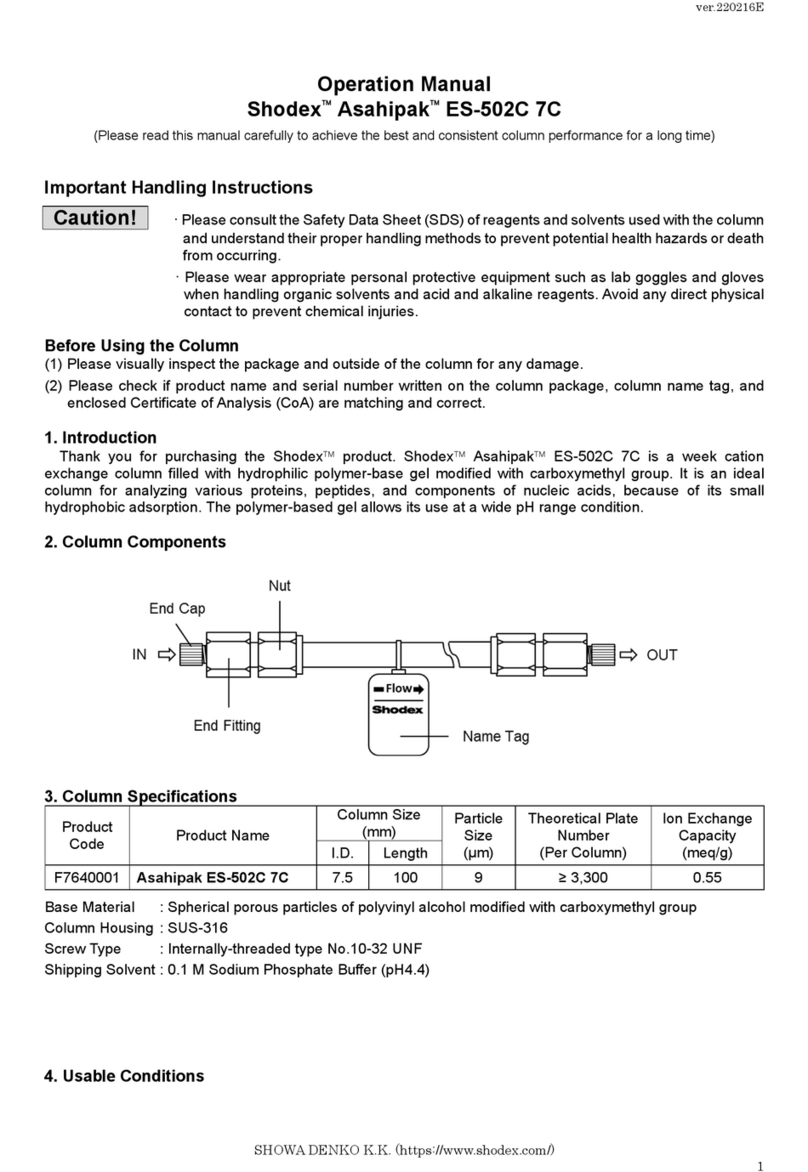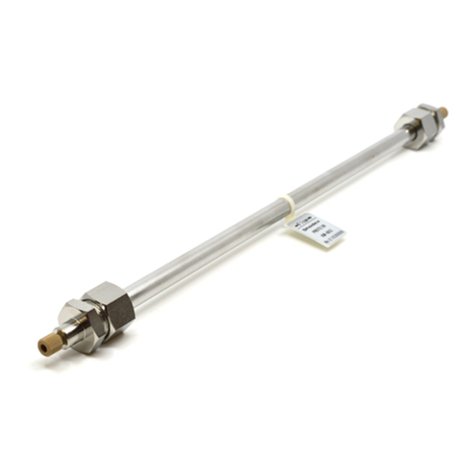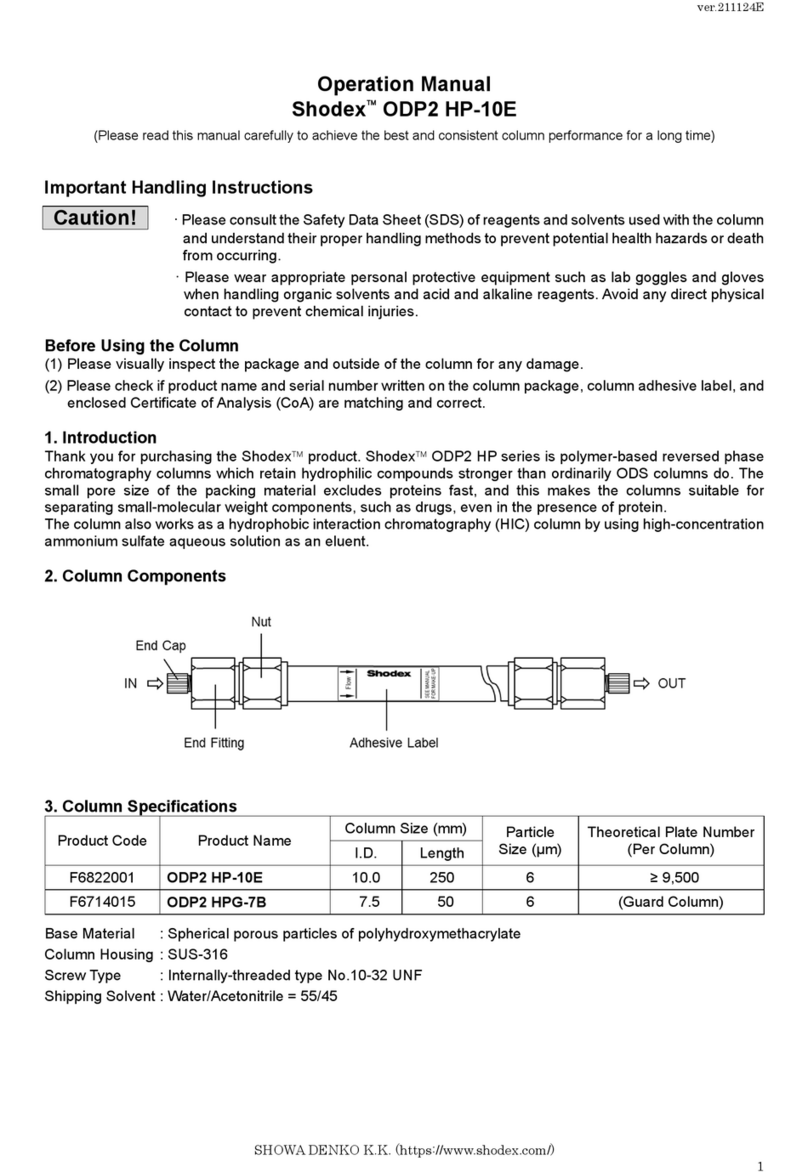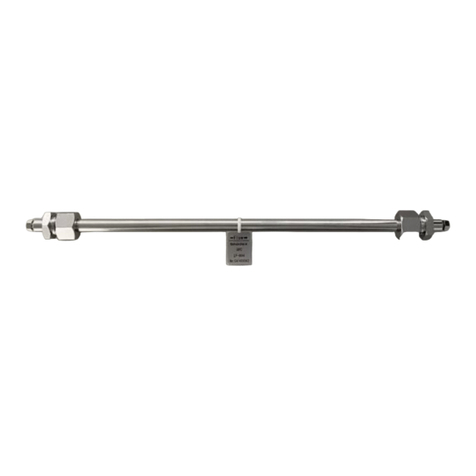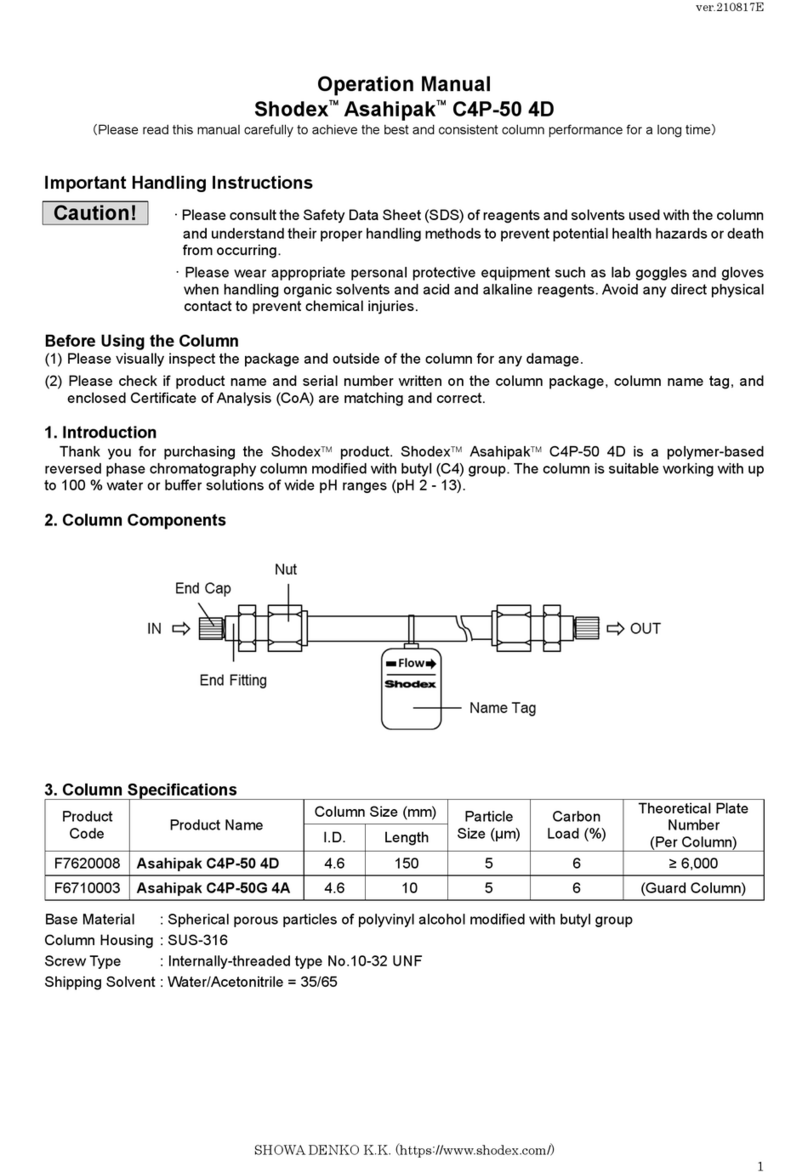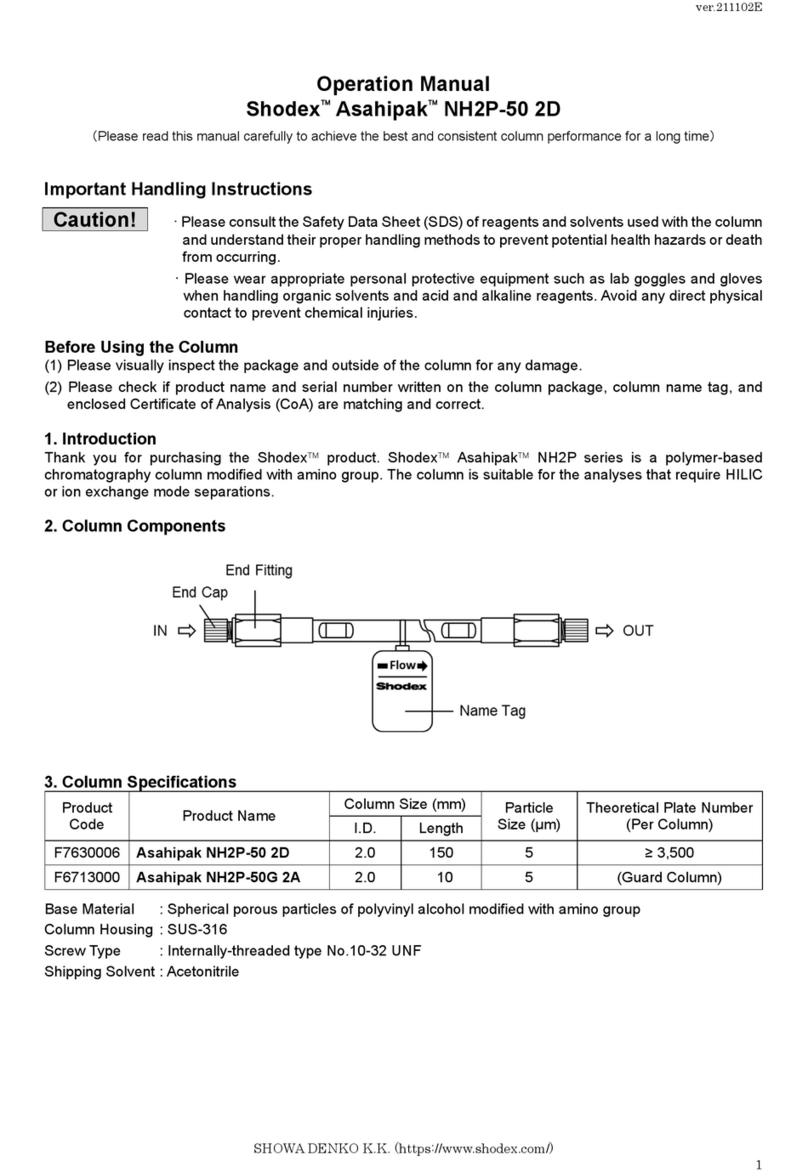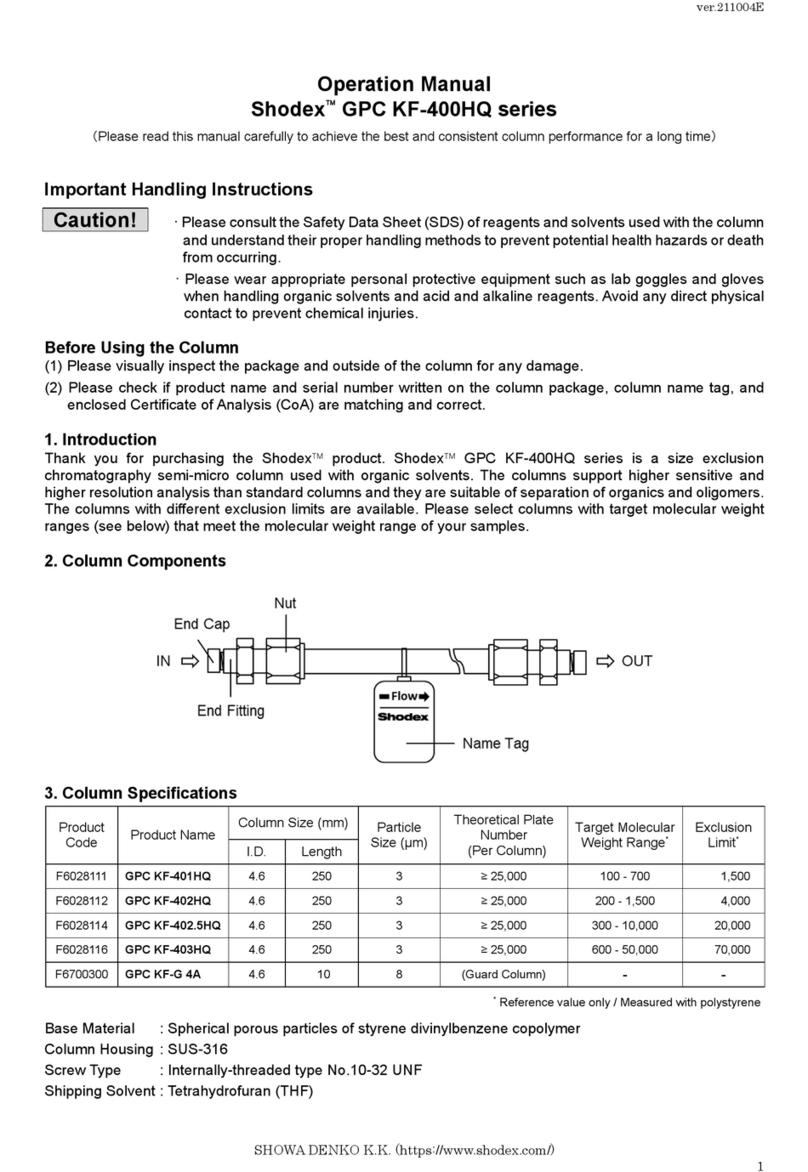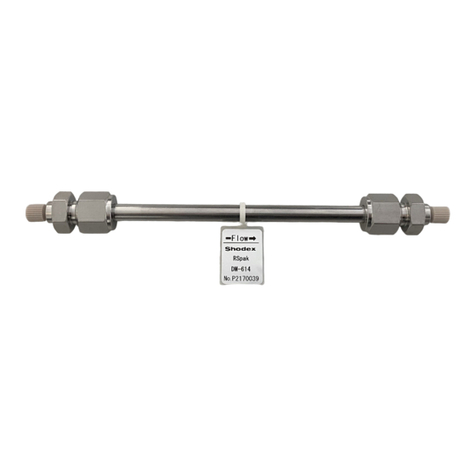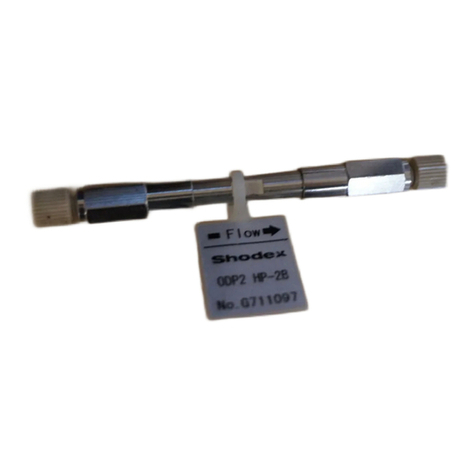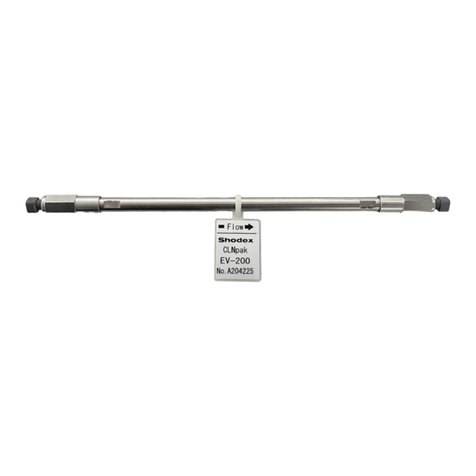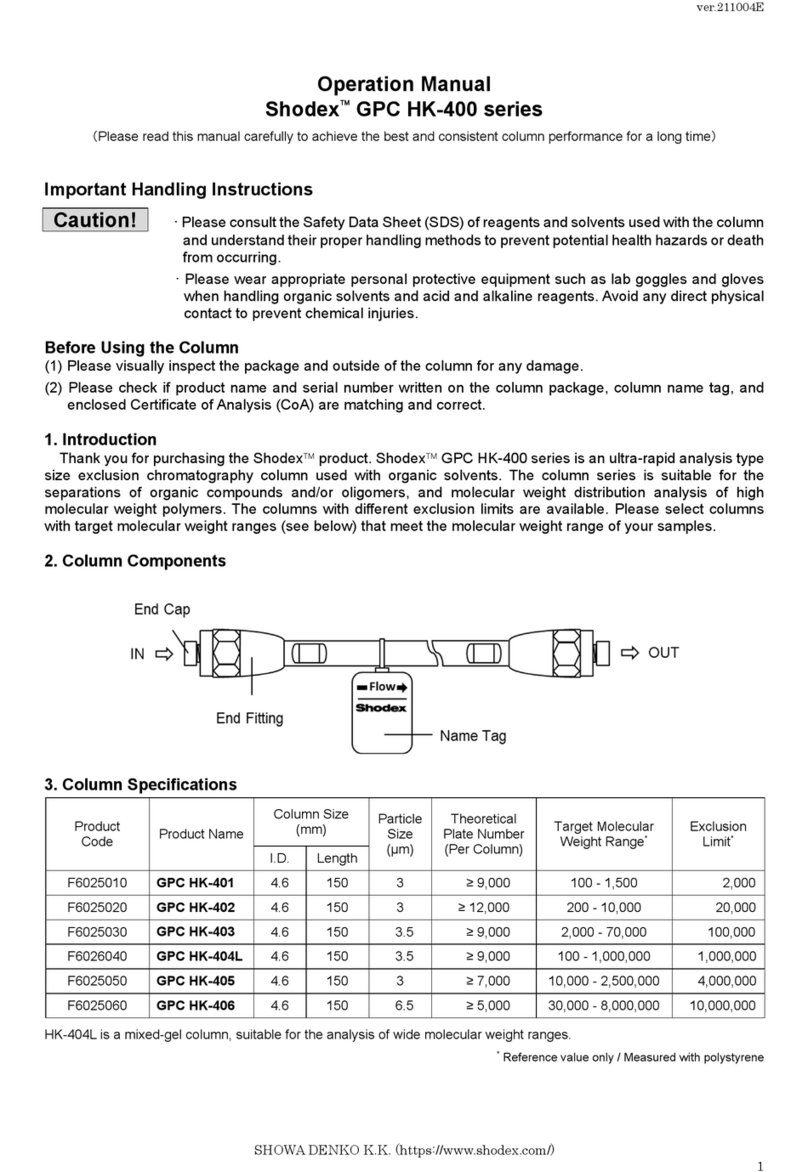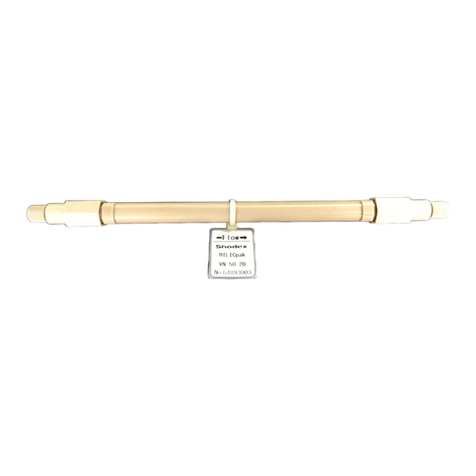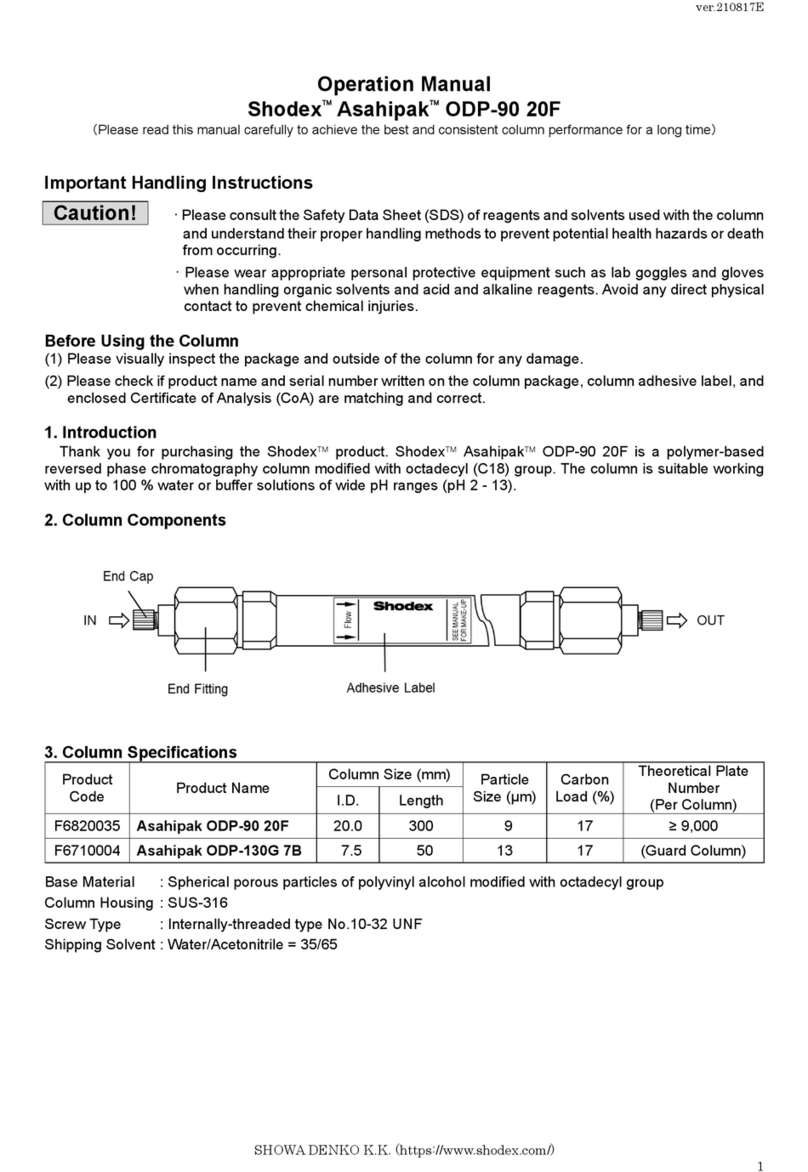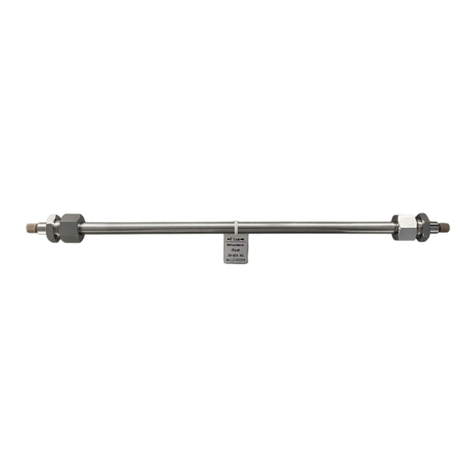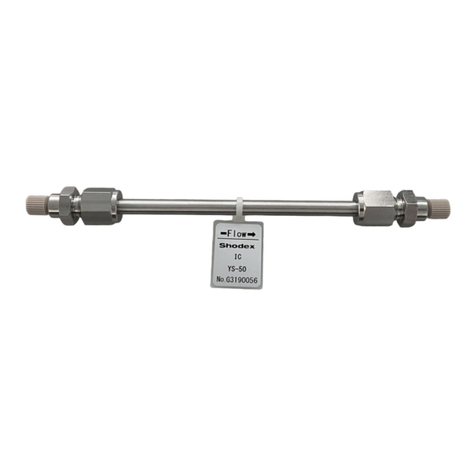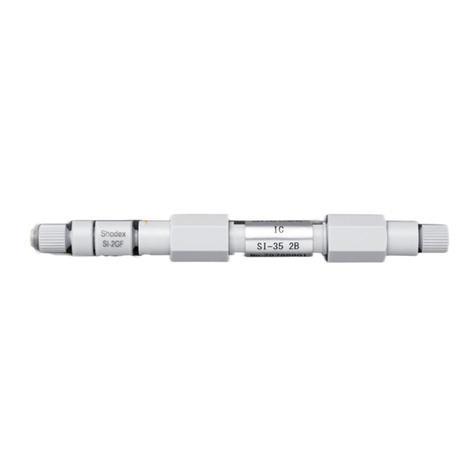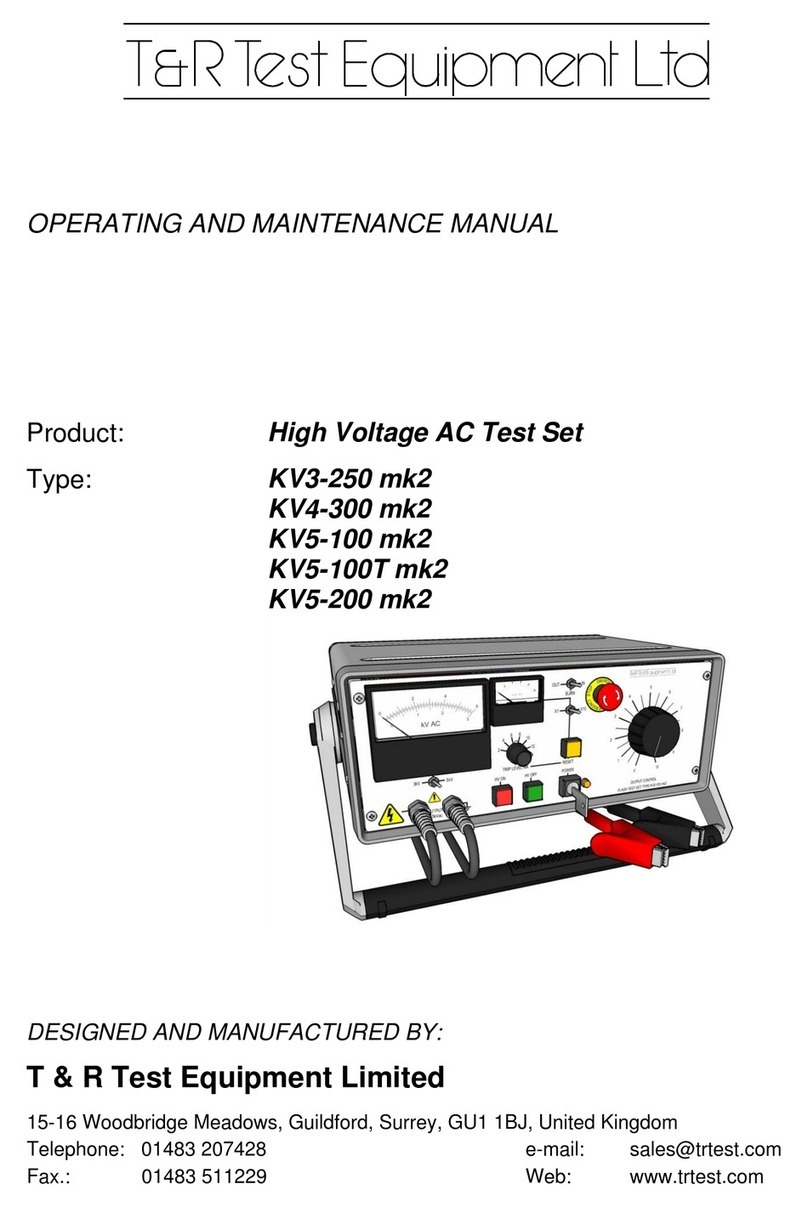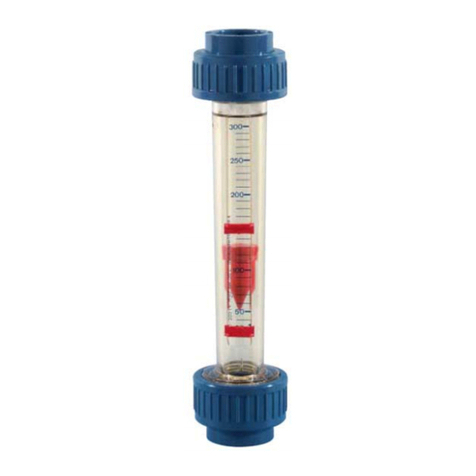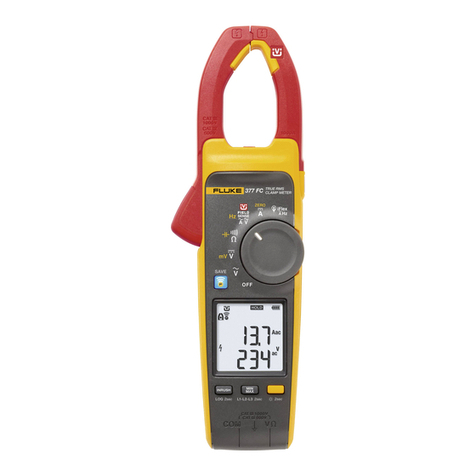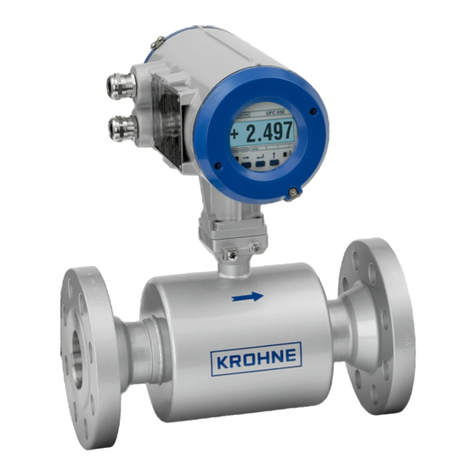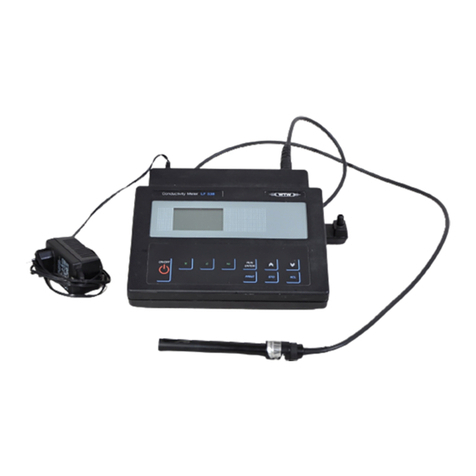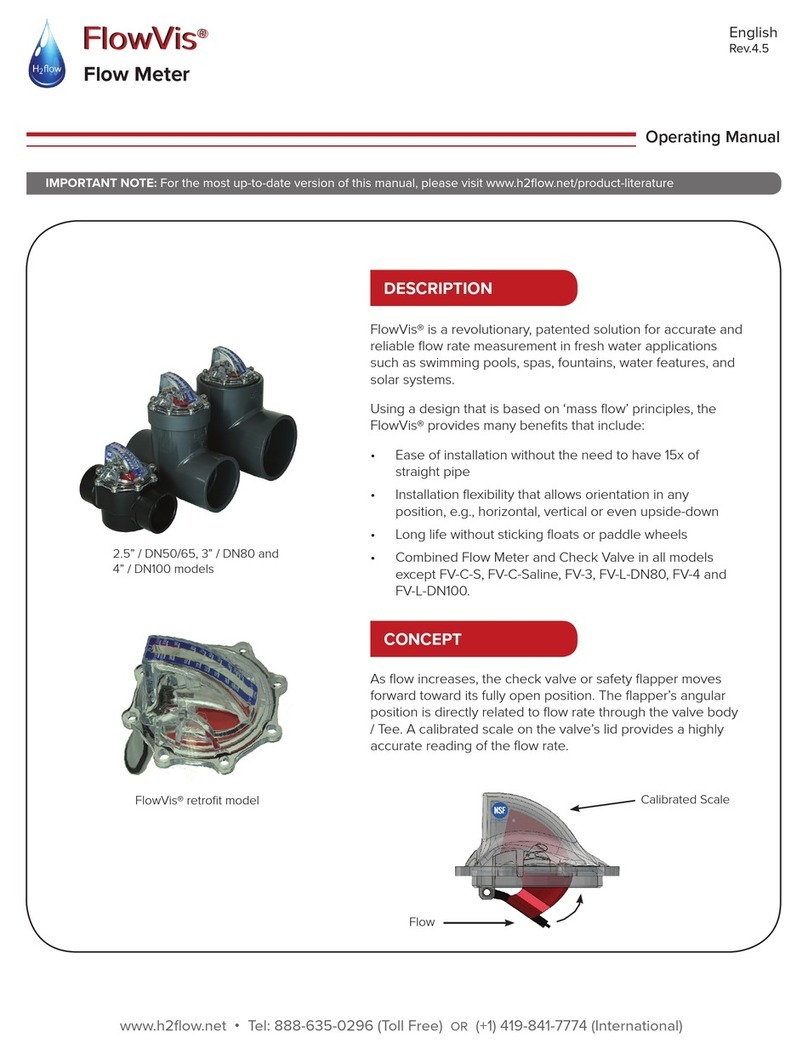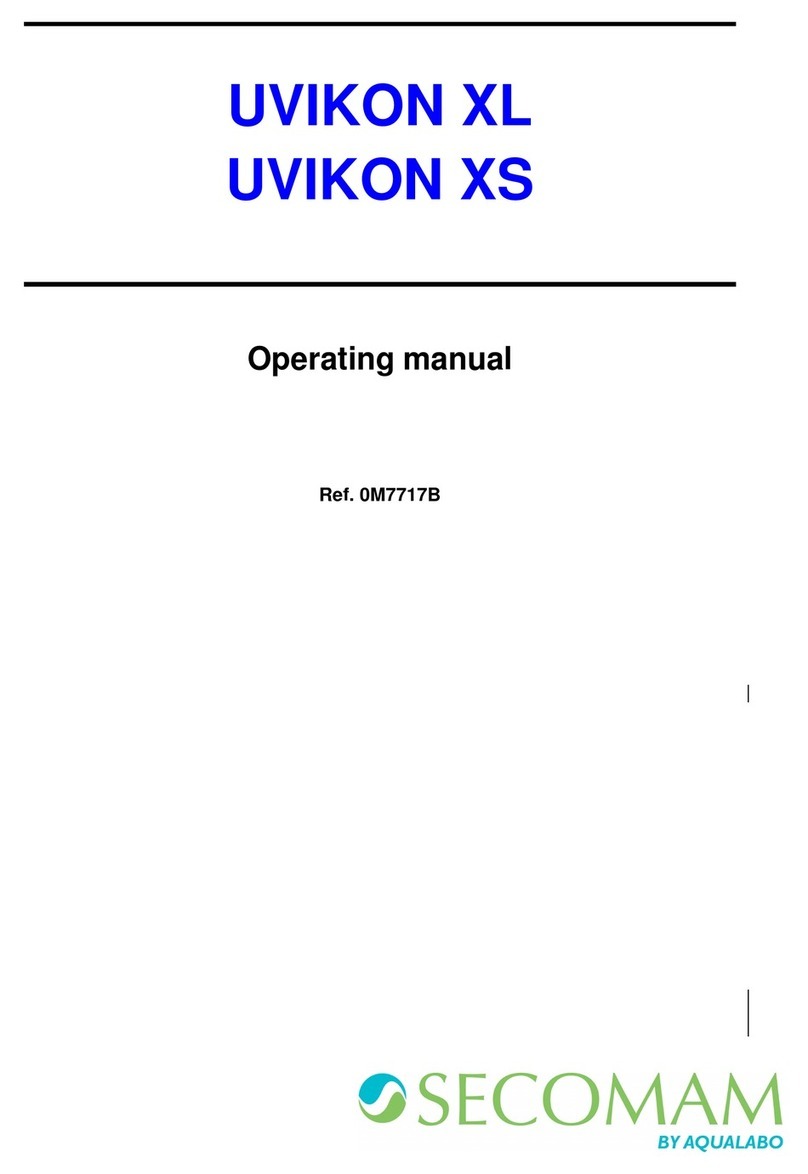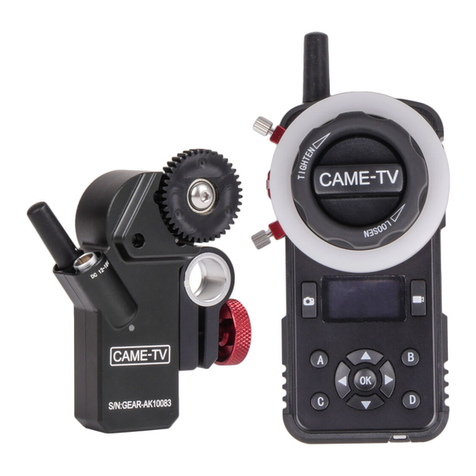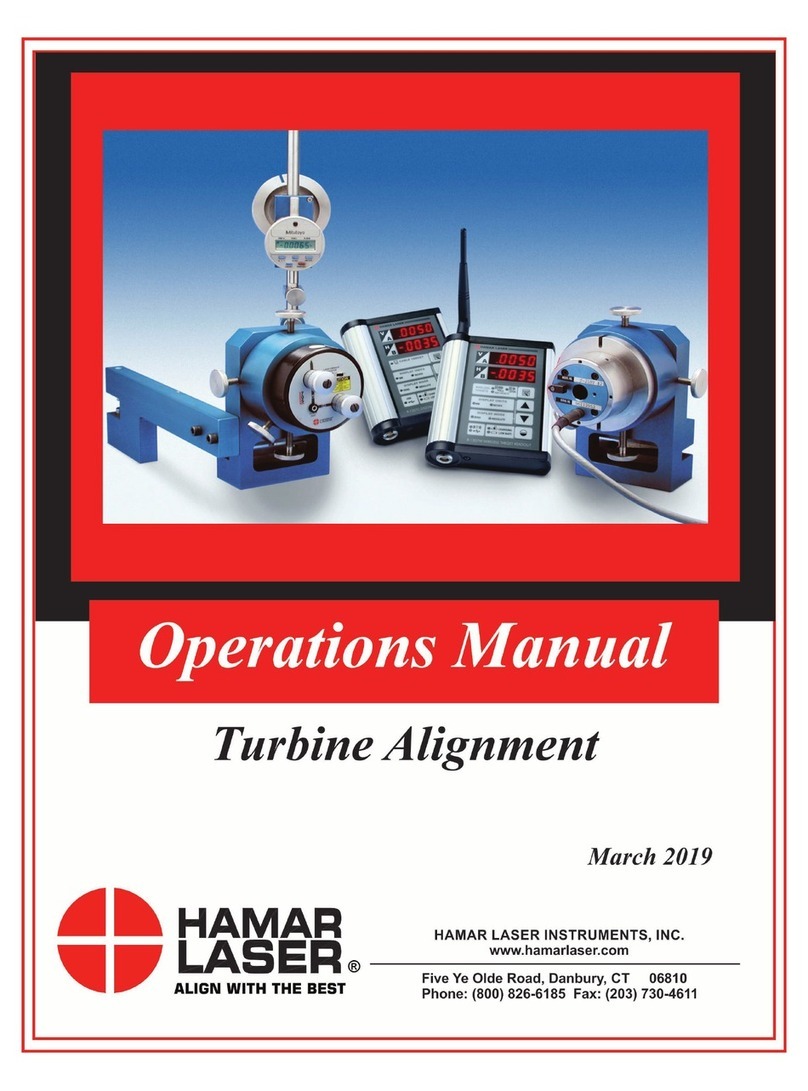
Asahipak ODP-50 (C8P, C4P series)
Manual
6
4.5 Connection of column to HPLC
Connect the column inlet to the tube from the injector. Do not turn the fitting tight. Turn on the
pump flow to one half the lower operating range in Table 1. Allow a small amount of the mobile
phase to leak out and displace any air bubbles from the cavities in the column inlet.
Tighten the inlet fitting. Then loosely connect the outlet fitting. After a few drops have formed,
tighten the fitting. This should displace any air from the system.
5. Mobile phase and sample preparation
5.1 Filtering
If particles are allowed to flow into the Asahipak column, the packed bed in the column will trap
the particles. Eventually the column will become plugged. To avoid this, the mobile phase and
sample should be passed through a 0.45 µm, or smaller, filter. For the mobile phase, the filter
should be installed between the pump and injector. The sample should be passed through any
one of the many different filters available for this purpose.
Filtering is not always effective in preventing plugging of the column. Experience shows that if
column plugging is a frequent problem, that, the plug is often located at the very top of the
column. Guard columns are short sacrificial columns that are installed ahead of the main
column to protect it. When a plug occurs, the guard column is replaced.
5.2 Degassing
Numerous practical problems are avoided when one uses mobile phases that have been treated
to remove, or least lower their content of dissolved gases, especially air. The most convenient
way to remove dissolved air is to gently bubble helium through the mobile phase reservoirs. If
one is using mobile phases containing a mixture with volatile components, then the helium may
slowly remove the volatile components, which can cause a systematic shift in the retention
times of the analyte. In this case, the use of a commercial on-line degasser is recommended.
6. Compatible mobile phases
Asahipak ODP, C8P and C4P columns can be used with mobile phases or eluents containing
water, methanol and acetonitrile. In general, water acetonitrile combinations provide greater
efficiency, especially for compounds containing an aromatic ring.











